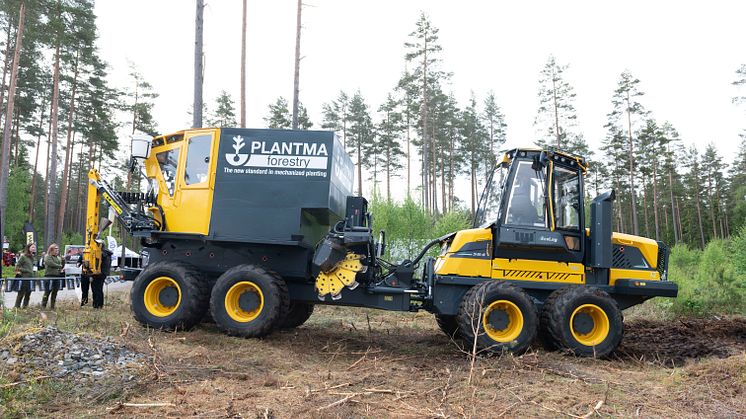
News -
PlantMax premiere attracts big crowds
- "So far, our biggest market has been Brazil and Canada. In recent years, we have grown incredibly there and built up experience that we are now taking with us into Swedish conditions," says Magnus Sandström, CEO of Platnma Forestry.
And Christer Larsson, Product Manager at Plantma, confirms that it delivers here too:
- Maximum capacity in perfect conditions is 3,000 plants per hour. In Swedish conditions, we are between 1,500-2,400 plants per hour.
PlantMax is mounted on a forwarder in the version shown at Elmia Wood.
- It is driven by two drivers, one in the forwarder cab and one in the planting cab. The soil preparation section sends signals about the soil conditions to the planting arms so it becomes very flexible. The soil preparation unit itself can be mounted separately in the centre of a forwarder that can forage as usual and then also do some soil preparation before rolling out of the stand, says Christer.
Revolutionising the planting process
The ground preparation part in all honour - it is when the planting arms start working that the eyes of fair visitors are drawn to the stand.
- Each arm works individually, sensing the soil and not planting until it is “happy” and has found the best planting point. The process is also integrated with fertiliser application if desired. Cameras monitor all stages and collect data, says Christer.
Via the PlantMax Live Data function, you can follow the machine's work remotely in real time. The machine saves all the data collected - for example, the exact position of each plant - which provides a basis for future interventions in the stand. The machine can hold up to 24,000 plants, which means a full day's work without reloading, says Christer.
- It's inspiring to show a fully functional, efficient solution for mechanical afforestation. I don't think everyone really realises how far we've come. PlantMax is spreading rapidly across the world - demand is high, says Magnus Sandström.
- I would liken it to when the harvester saw the light of day in the 1970s. We are facing the same revolution here, says Christer Larsson.


